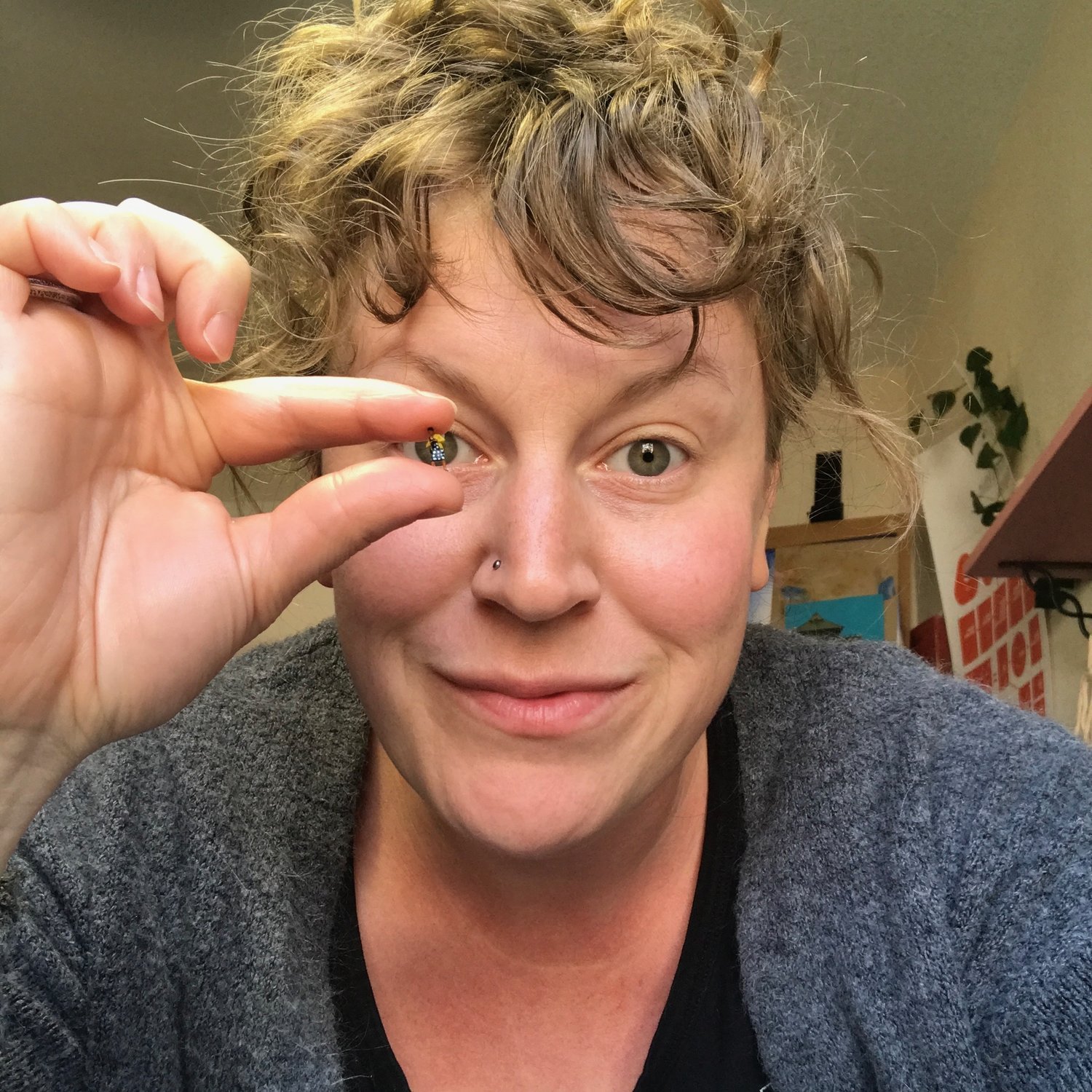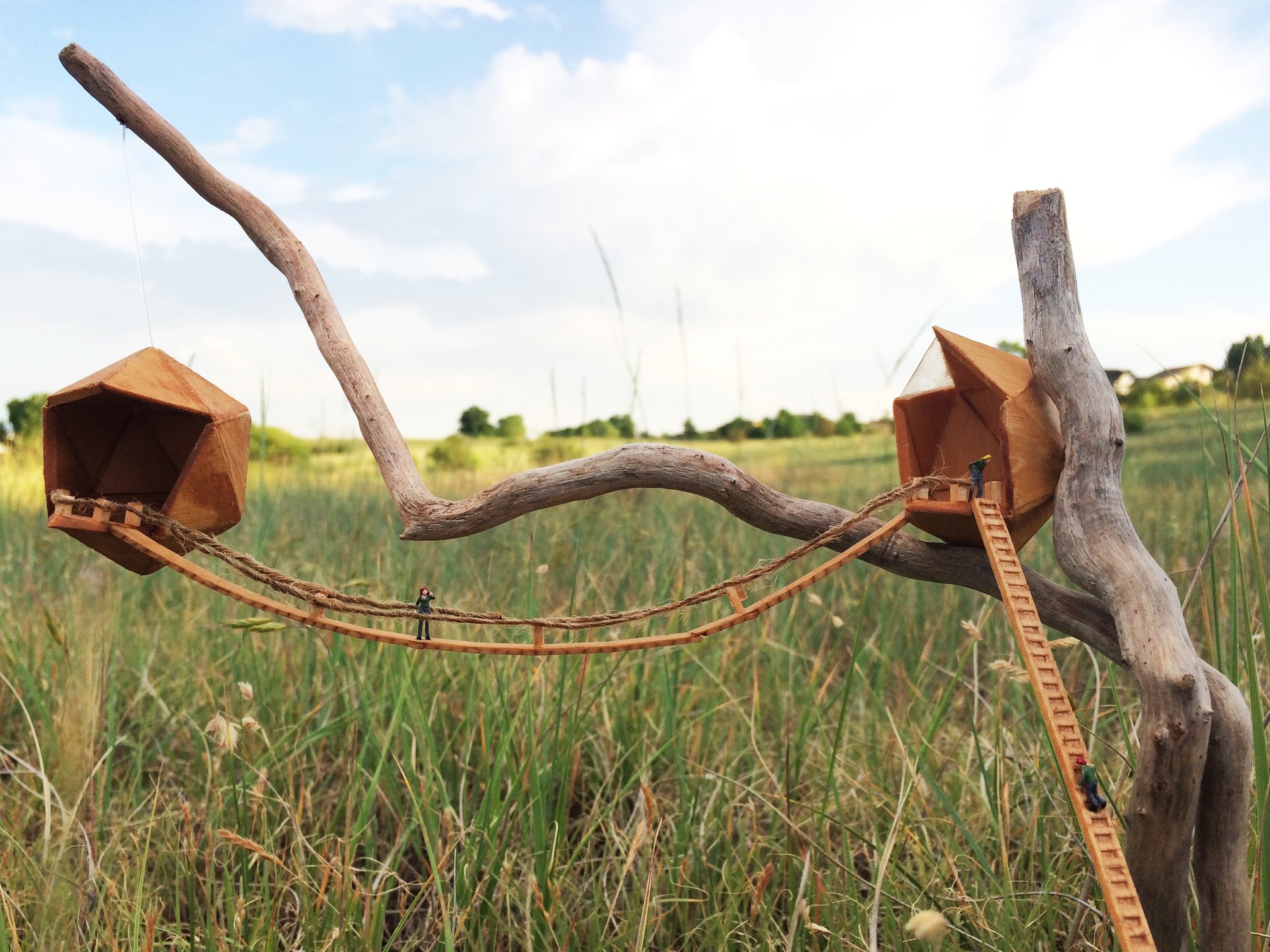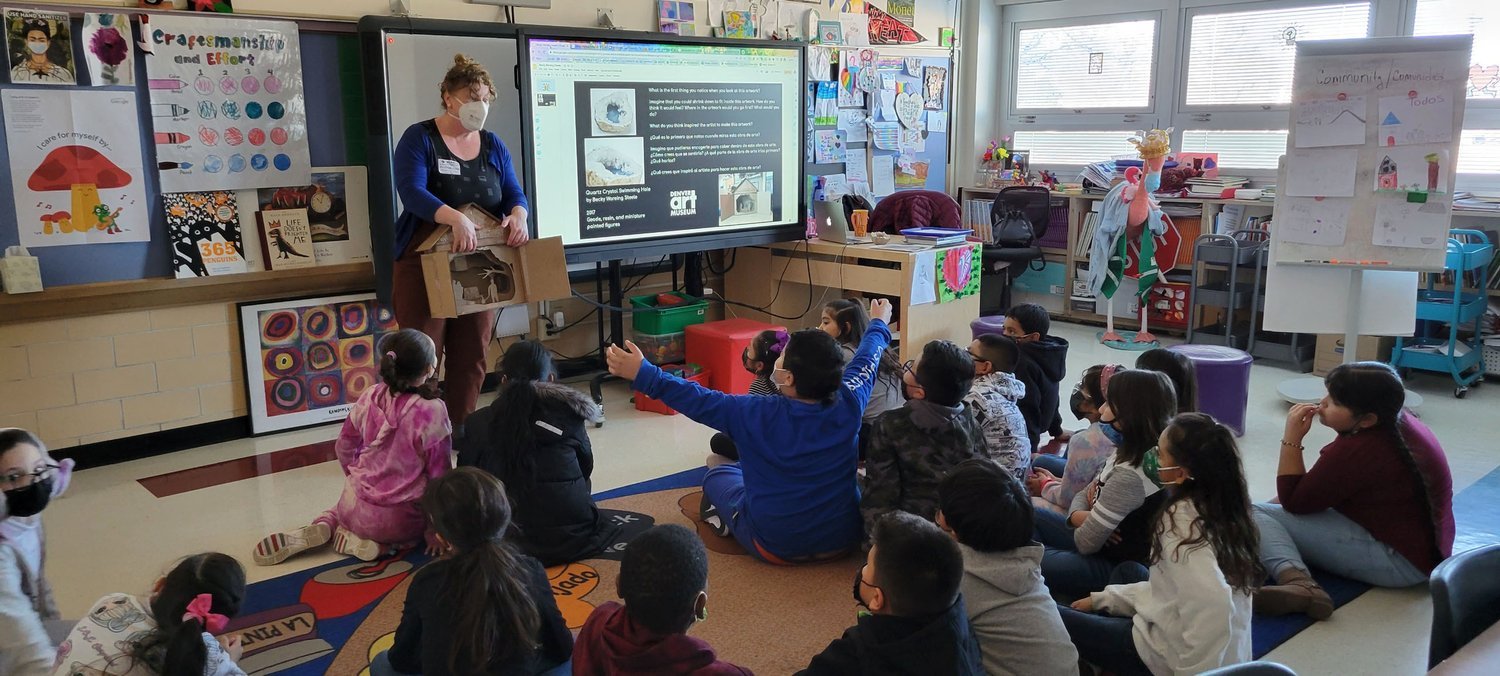For an emerging artist, the public art process can feel overwhelming at times. Many Requests for Qualifications (RFQs) require an artist to have completed a work of public art in order to apply and don’t allow artists to submit renderings as image examples, only completed works.
Becky Wareing Steele, a Project Coordinator at Public Art Services since 2018 found herself in this same situation. To follow is her own experience in her own words.
Becky Wareing Steele in her home studio holding a 1:160 scale figure she’s hand-painted in front of her eye.
I first started responding to public art RFQs in 2017 during my residency at RedLine Contemporary Art Center. I used images of my studio work as my examples and in my letter of interest expressed my passion for working with communities despite my lack of experience in the public art world. At first, I found this process to be extremely time-consuming with not much of an immediate return which was discouraging. Then in 2018, the unicorn of RFQs appeared in my inbox. They were looking for a local artist who had not yet completed a work of public art with a budget of $100,000 or more to create a work of art for a new park.
Having just started working with Public Art Services the timing felt kismet, to say the least. John Grant, founder of Public Art Services, recommended I take pictures of some of my small-scaled sculptures outside at a park at sunset to use as my image examples in my RFQ response. That week I packed up a selection of sculptures and set out to photograph them from different angles in a park outside at sunset and felt pleased with the results.
I was thrilled and in a state of shock when about a month later I received a phone call from the public art consultant for the project notifying me that I was a semi-finalist! I attended site visits, met the other short-listed artists, and developed my proposal. It was an exciting process and in the end, although I was not selected for the commission I learned a lot and left the experience with some new “tools” to add to my “artist kit” and the confidence to continue to respond to RFQs knowing that at some point my name would be called again.
A rendering of Becky’s proposal for Prickly Plume Park, a series of seven pedestrian scaled kaleidoscopic sculptures entitled Reflections that encourage interaction with natural objects found in the park while also functioning as interactive theremins that emit ambient sounds as viewers approach the sculptures.
One of the signs that greets visitors to Friendship Alley, a community space created by Westwood Unidos in 2016.
In late 2020 I was approached by a local curator who was putting together a group of local artists to develop concepts for temporary public art installations in Denver’s Westwood neighborhood with a small budget provided by the Denver Streets Partnership. The aim of these temporary art installations was to have artists create works that addressed the ongoing issues this neighborhood faced surrounding crashes involving vehicles and pedestrians. In early 2021 we did a site visit and walking tour of the Westwood neighborhood where staff from the Denver Streets Partnership walked us through some potential areas for art interventions.
During this walking tour, I identified an area I was interested in creating artwork for called Friendship Alley (Callejon de la Amistad). This space was created by Westwood Unidos, a local organization supporting resident leadership in the community, in 2016 as a safe space for students to walk to and from school. I began dreaming up ideas that worked within my initial budget but quickly realized I wanted to create something more permanent in nature. That’s when I began researching different local grants specifically geared towards arts and community and started applying.
Over the course of several months I was able to leverage the initial grant funding from the Denver Streets Partnership and raise additional funds from the Colorado Arts Relief Fund, the INSITE Fund and Andy Warhol Foundation for the Visual Arts, Colorado Creative Industries and the National Endowment for the Arts, and Denver Arts and Venues P.S. You Are Here Grant. The grant funding raised made it possible for me to turn this temporary idea into something more permanent that could be on view for 1-2 years rather than a couple of months before the winter weather moved in.
Becky seen presenting the cardboard prototype of the proposed sculpture to Munroe Elementary School Students in early 2022.
With the grant funding secured, I began working with students at Munroe Elementary School with the support of the school’s then art teacher Maggie Latorre in early 2022. I had the opportunity to host a series of art-based workshops with students ranging in age from early childhood education (ECE) to fifth grade. During these workshops, students learned about public art and explored the idea of community and what it means to them. The ideas that came out of these workshops then informed the final sculptures.
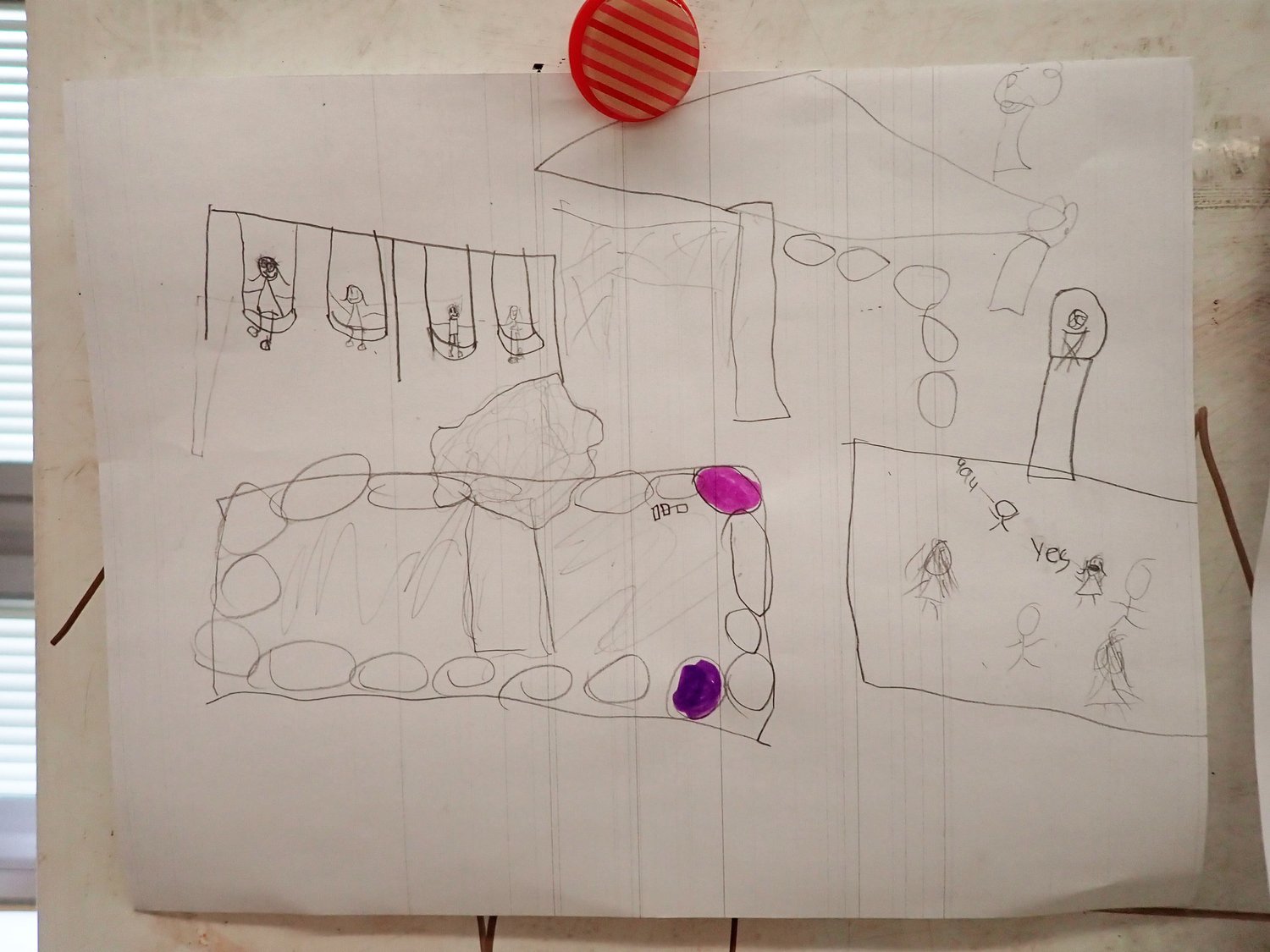
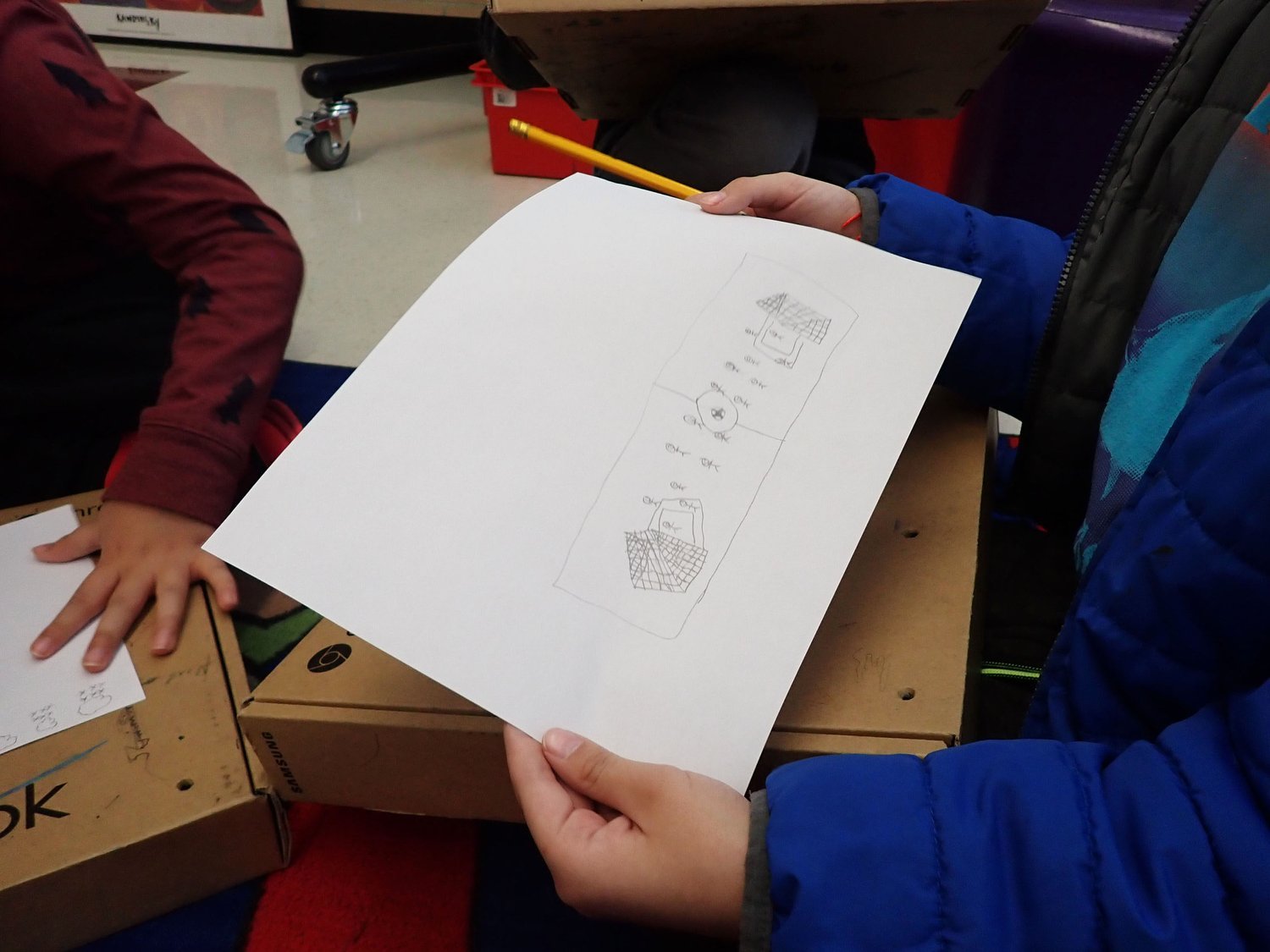
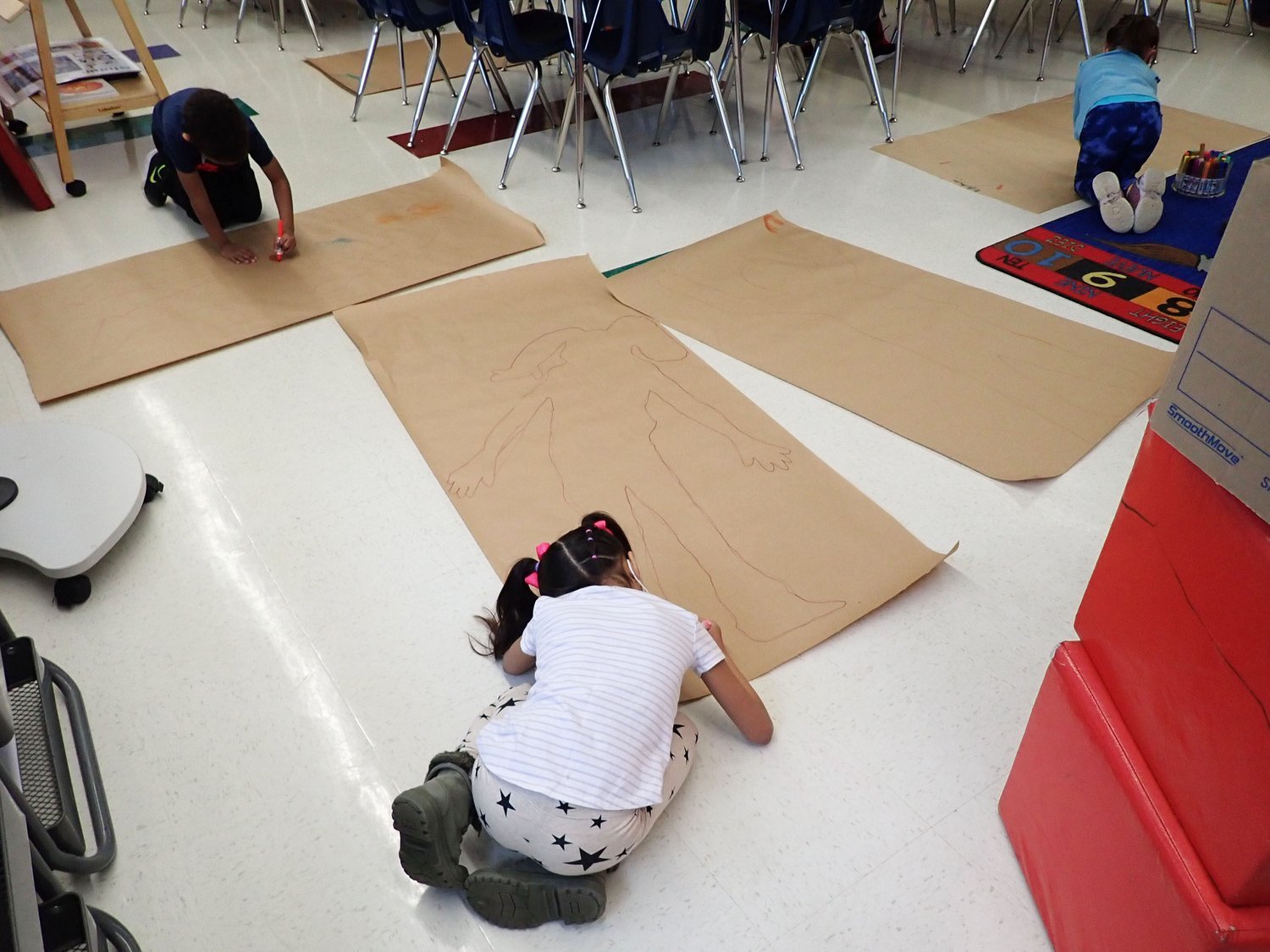
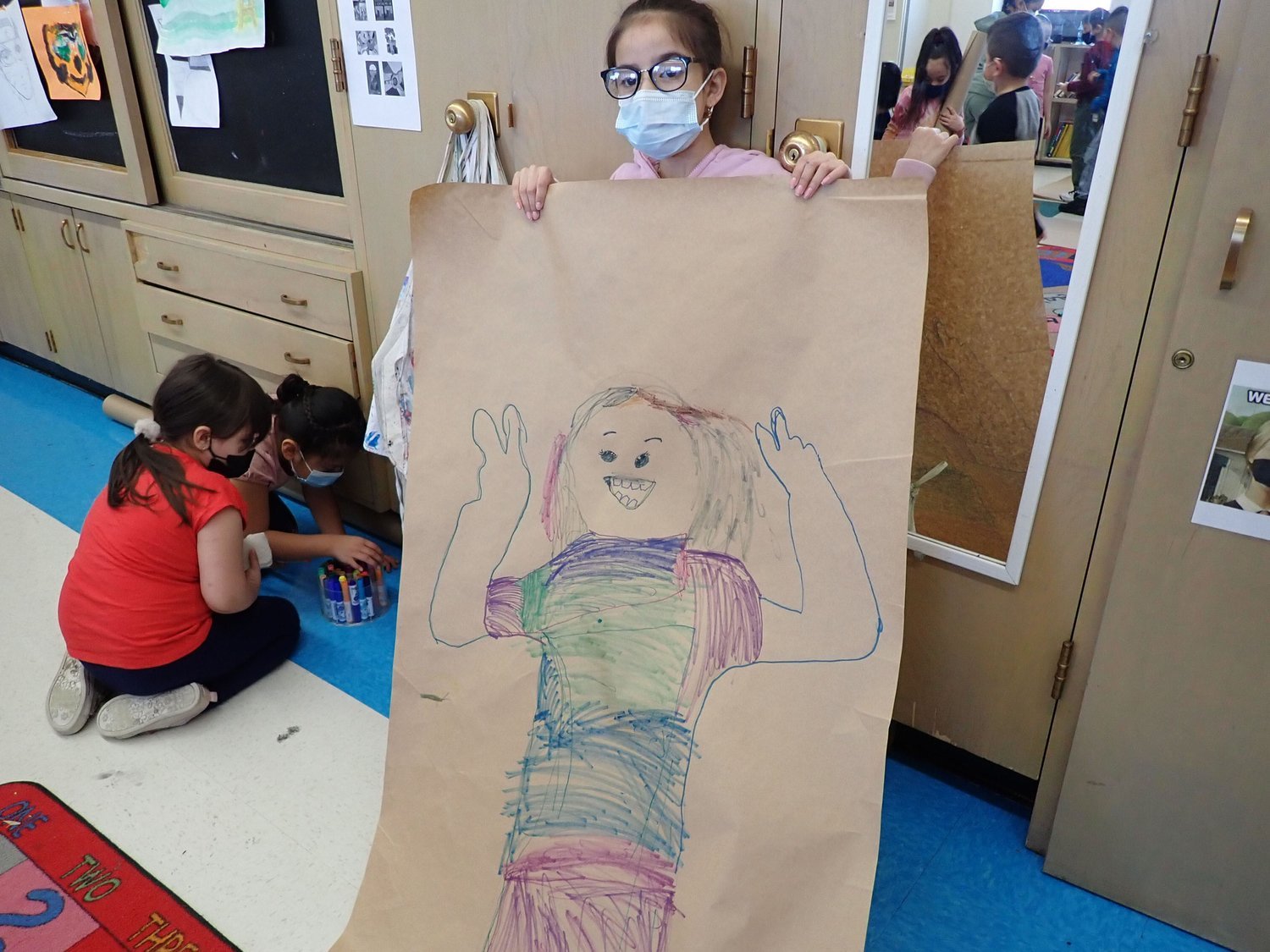
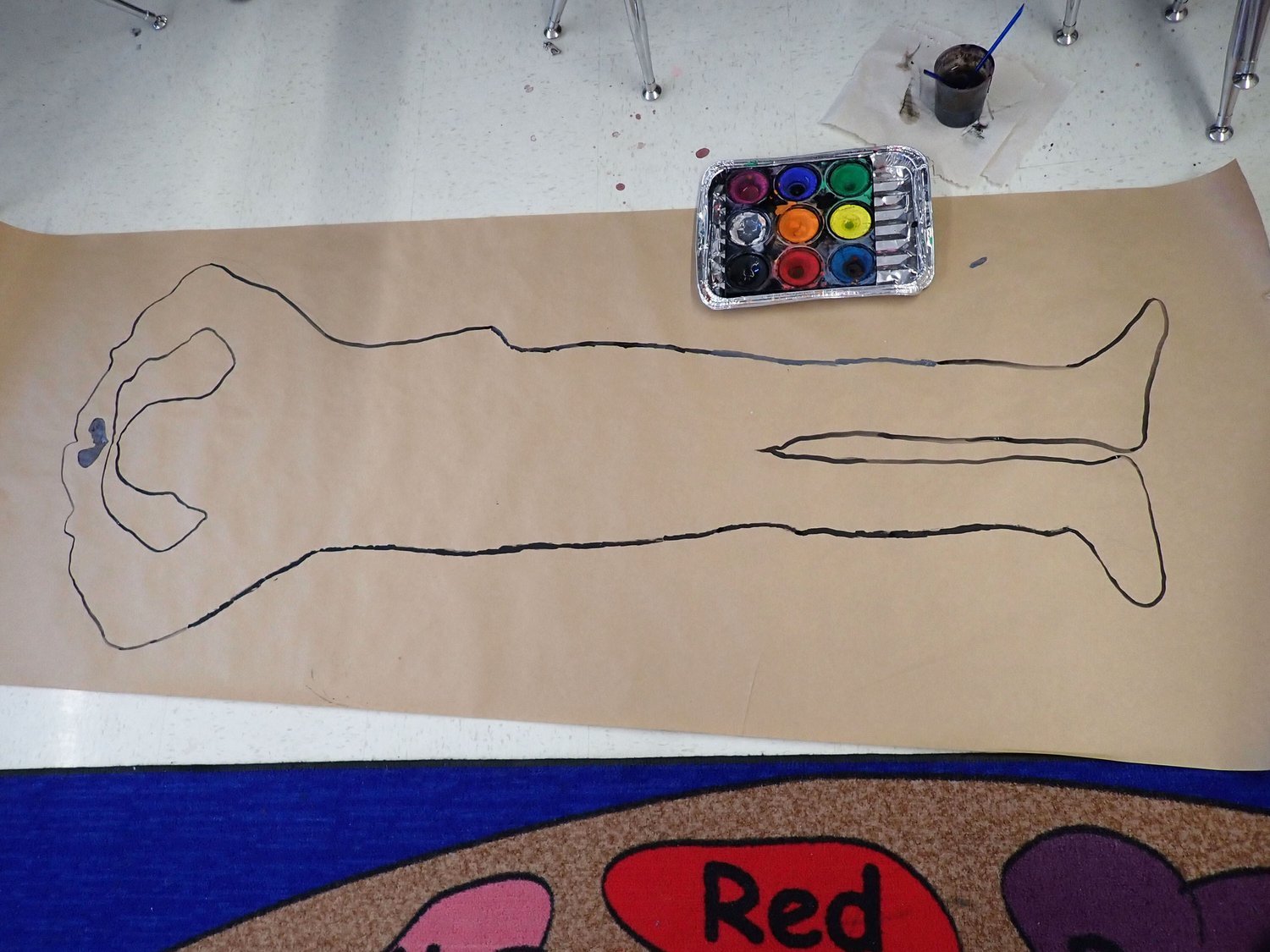
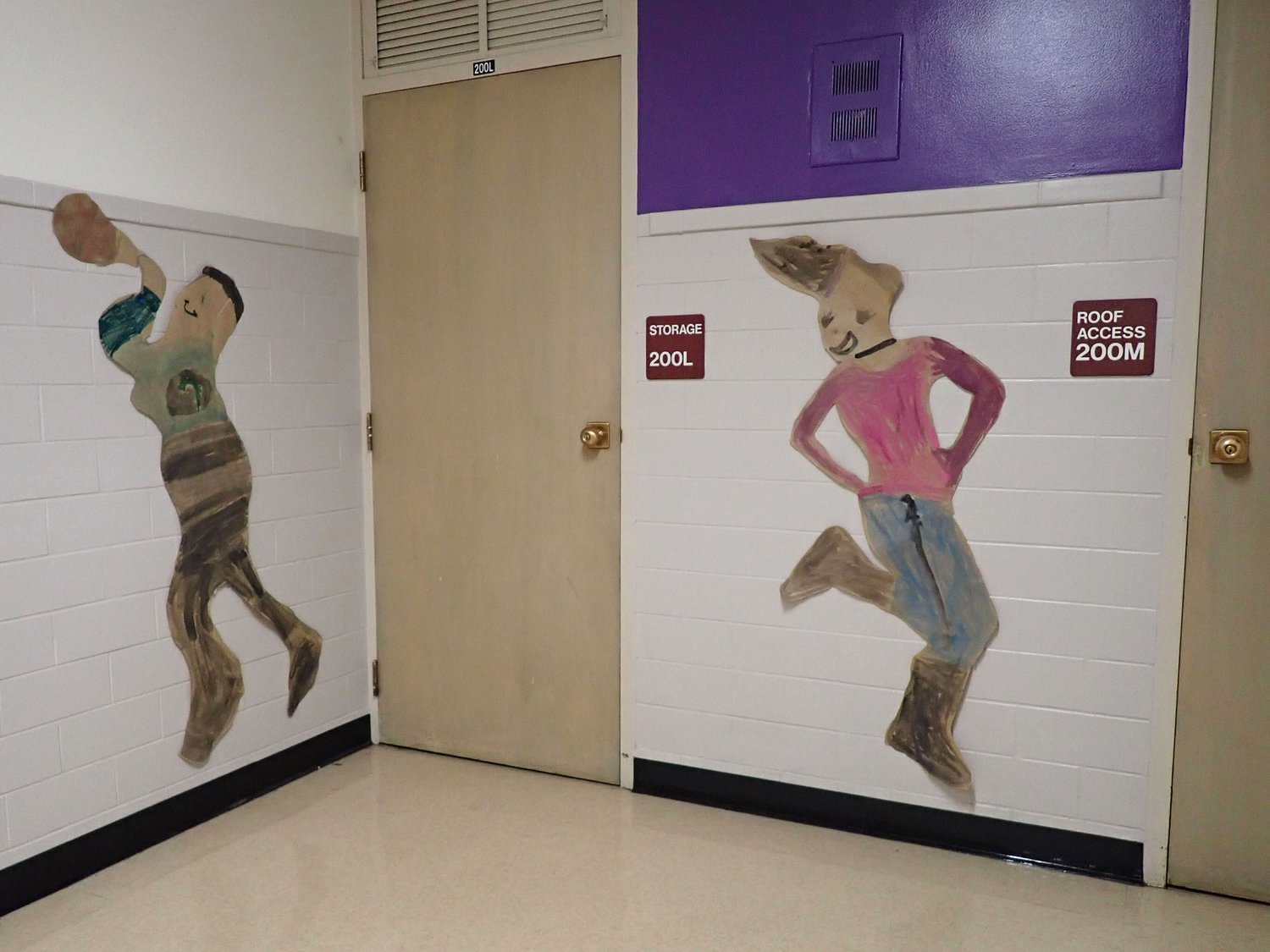
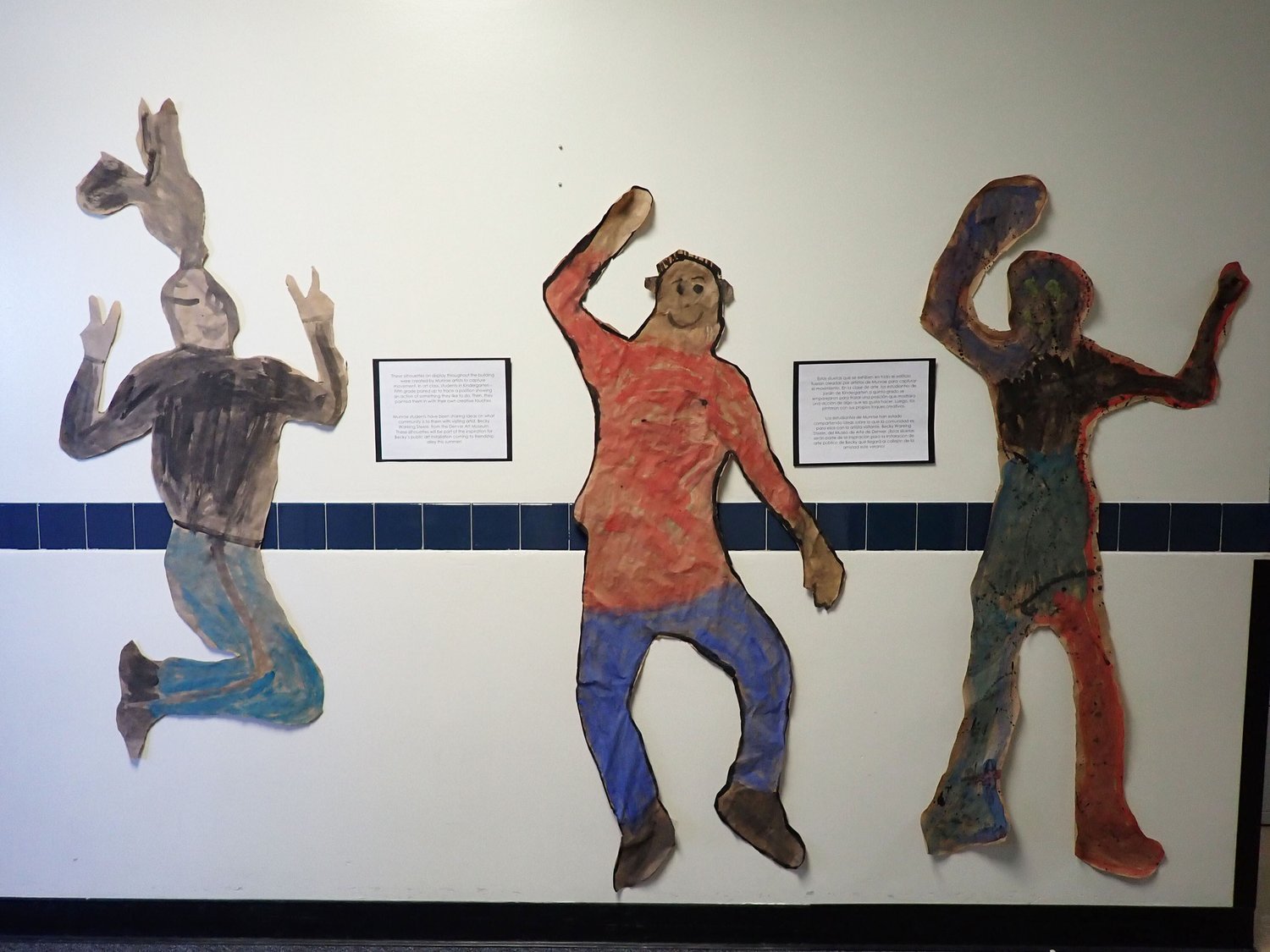
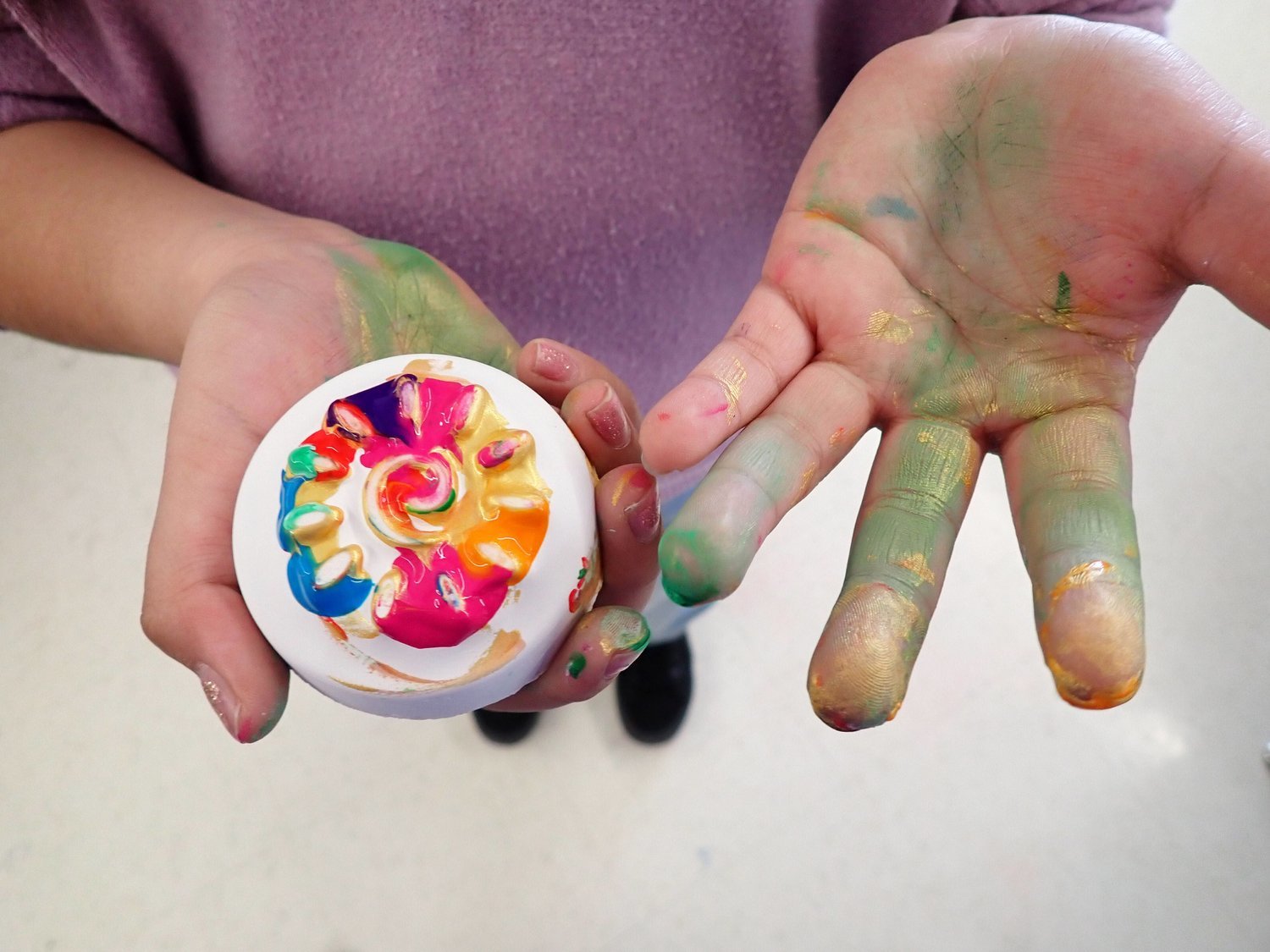
I then began work in the studio designing a series of pedestrian scaled sculptures that told the students’ stories of community. Thanks to the grant funding I was able to partner with a local fabricator to bring these works to life using durable materials worthy of an outdoor installation. The end result was a series of six little library scaled sculptures that were installed in the fall of 2022. The series of sculptures entitled “What Does Community Mean to You? (¿Qué significa para ti la comunidad?)” highlights a safe walking path for students walking to and from Munroe Elementary’s main entrance through Friendship Alley. The solar panels installed in the roof of each sculpture allow for the scenes within to become illuminated in the evening emitting a soft glow.

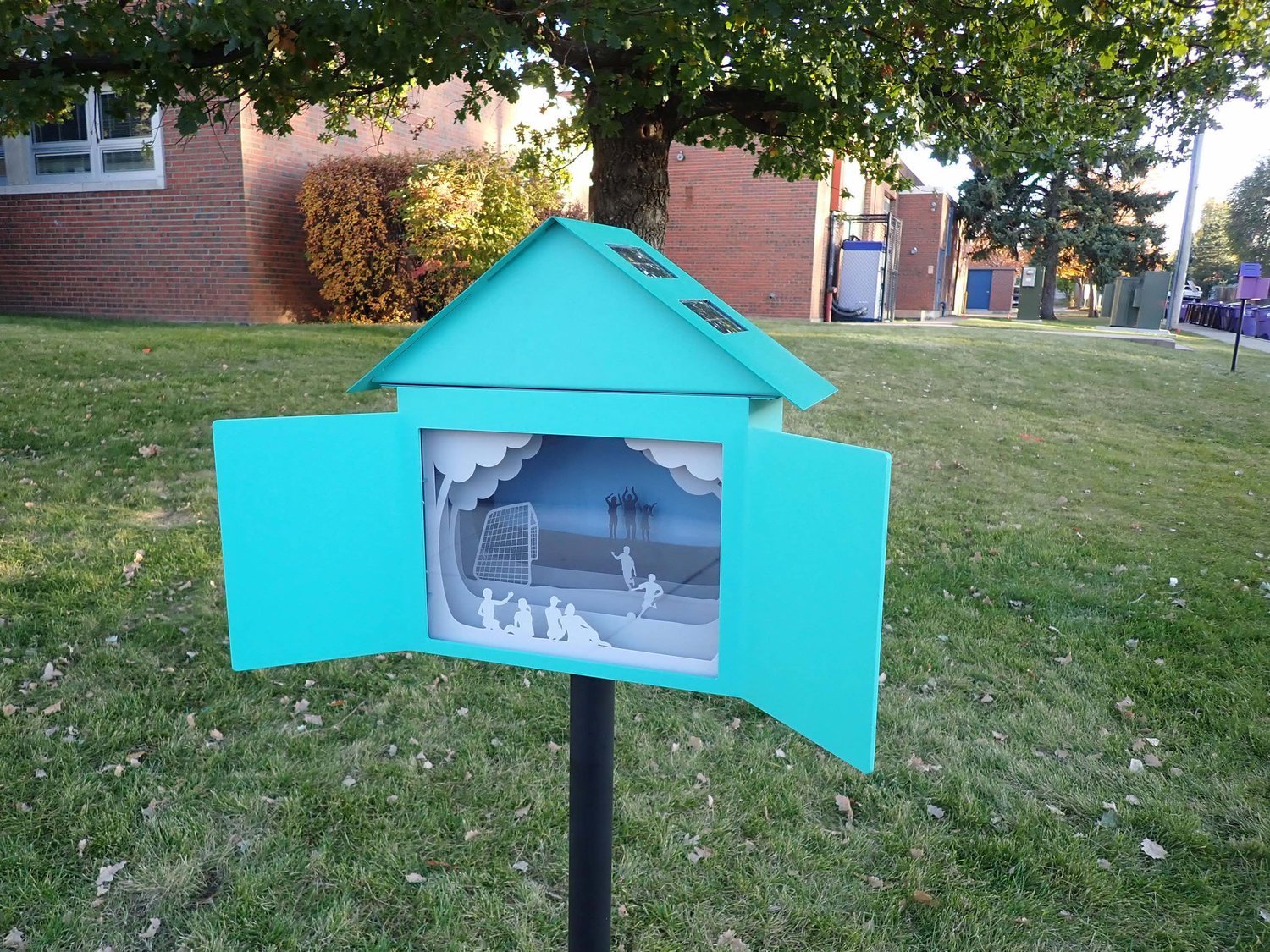
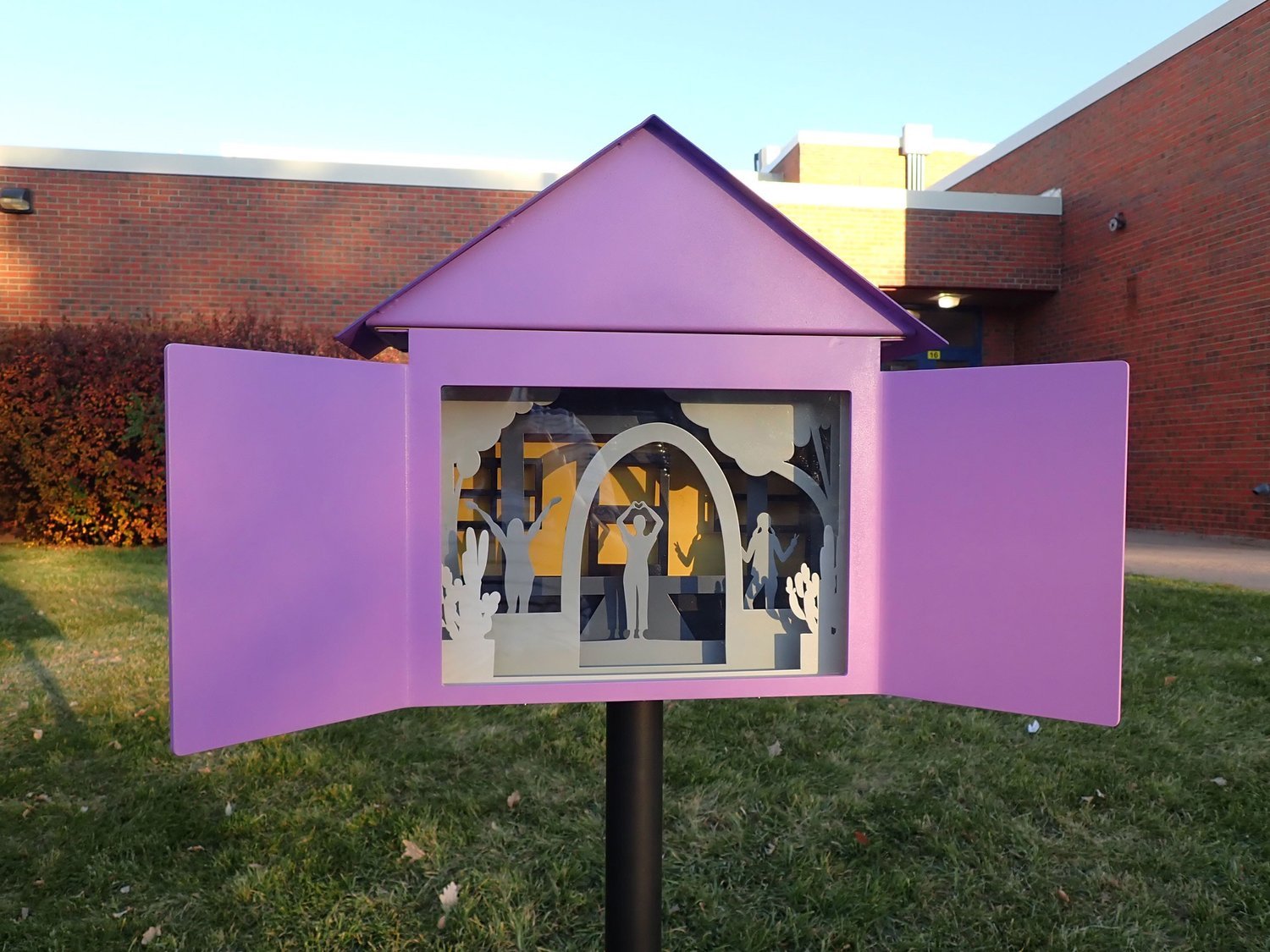
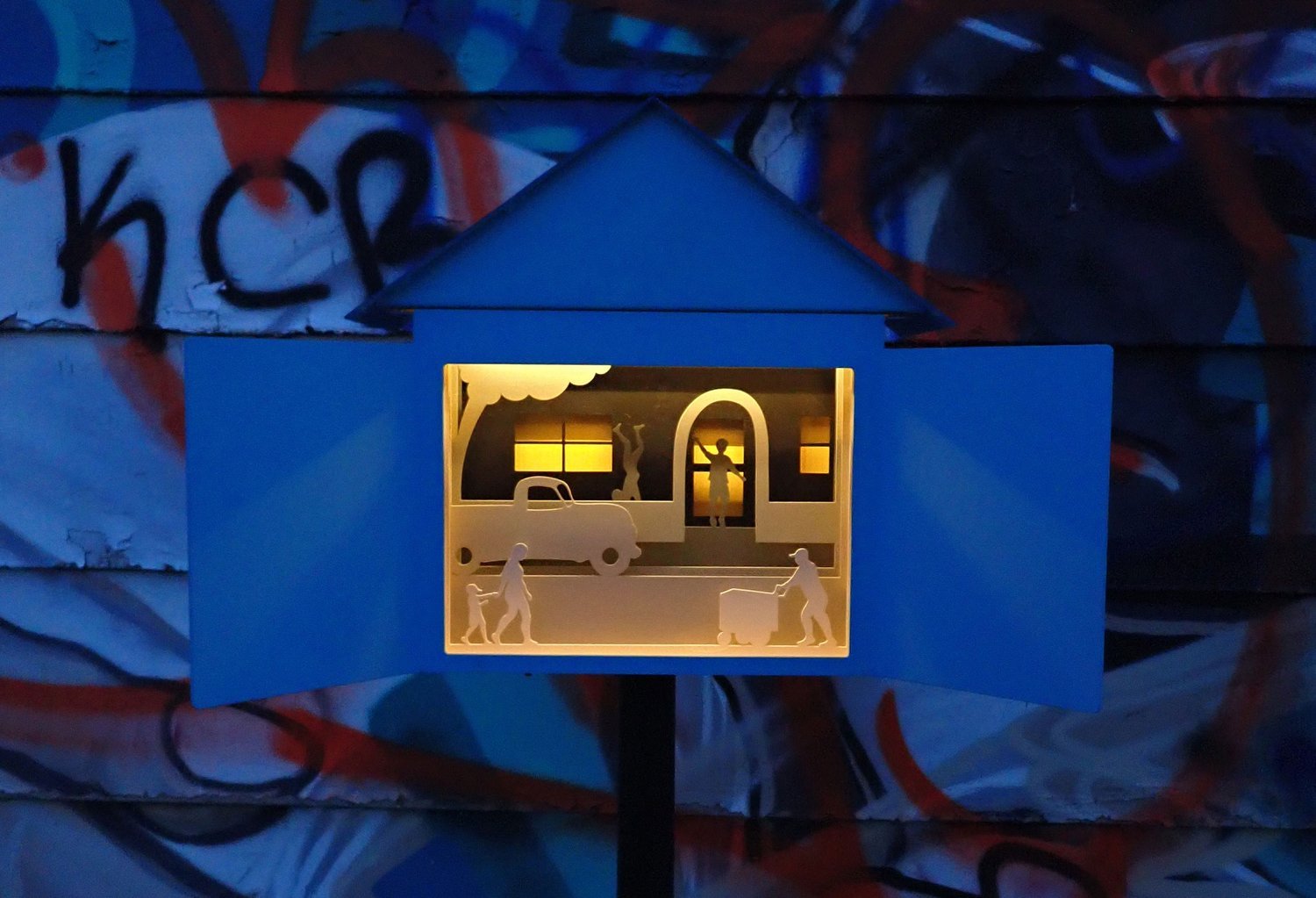
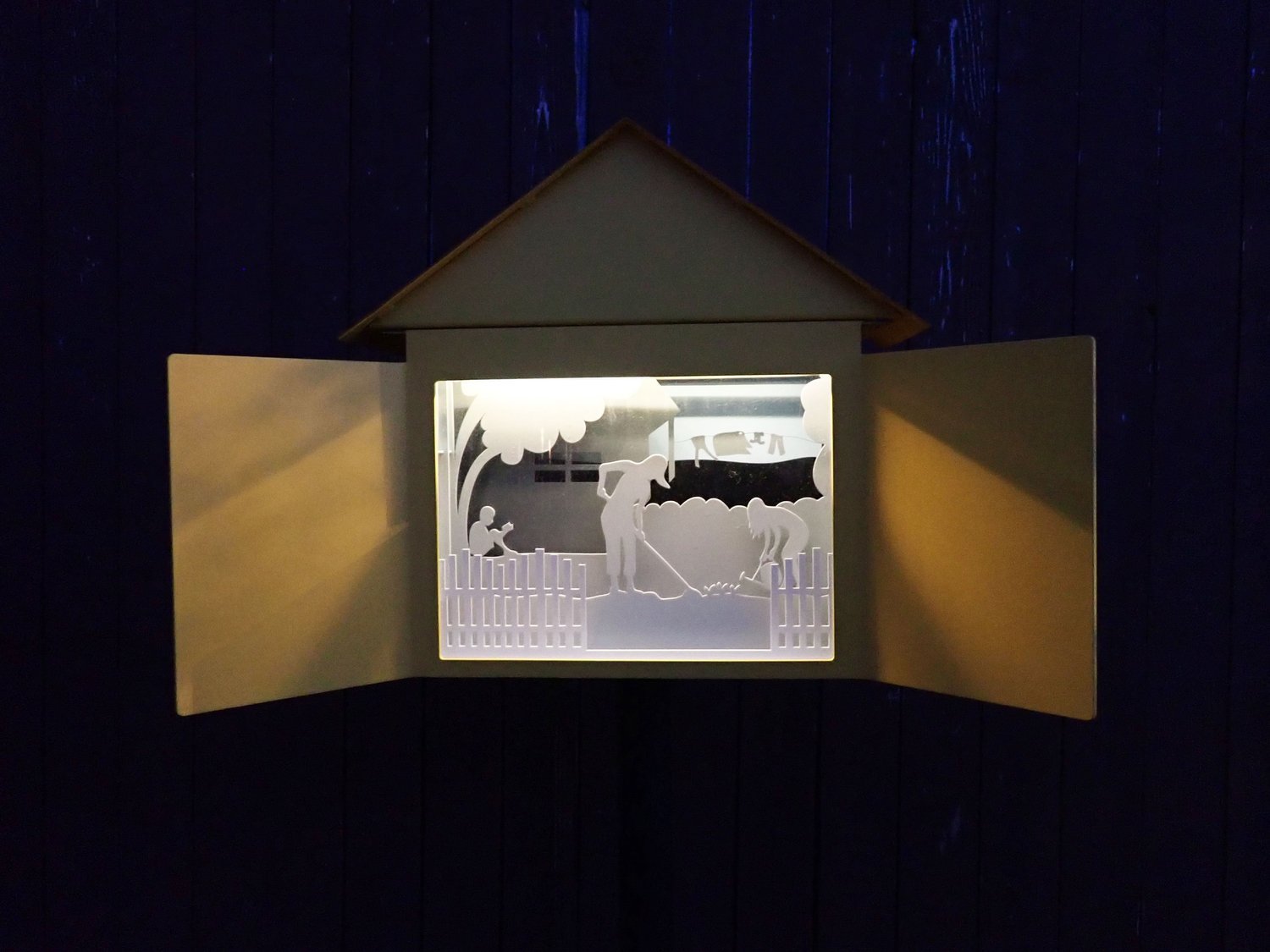
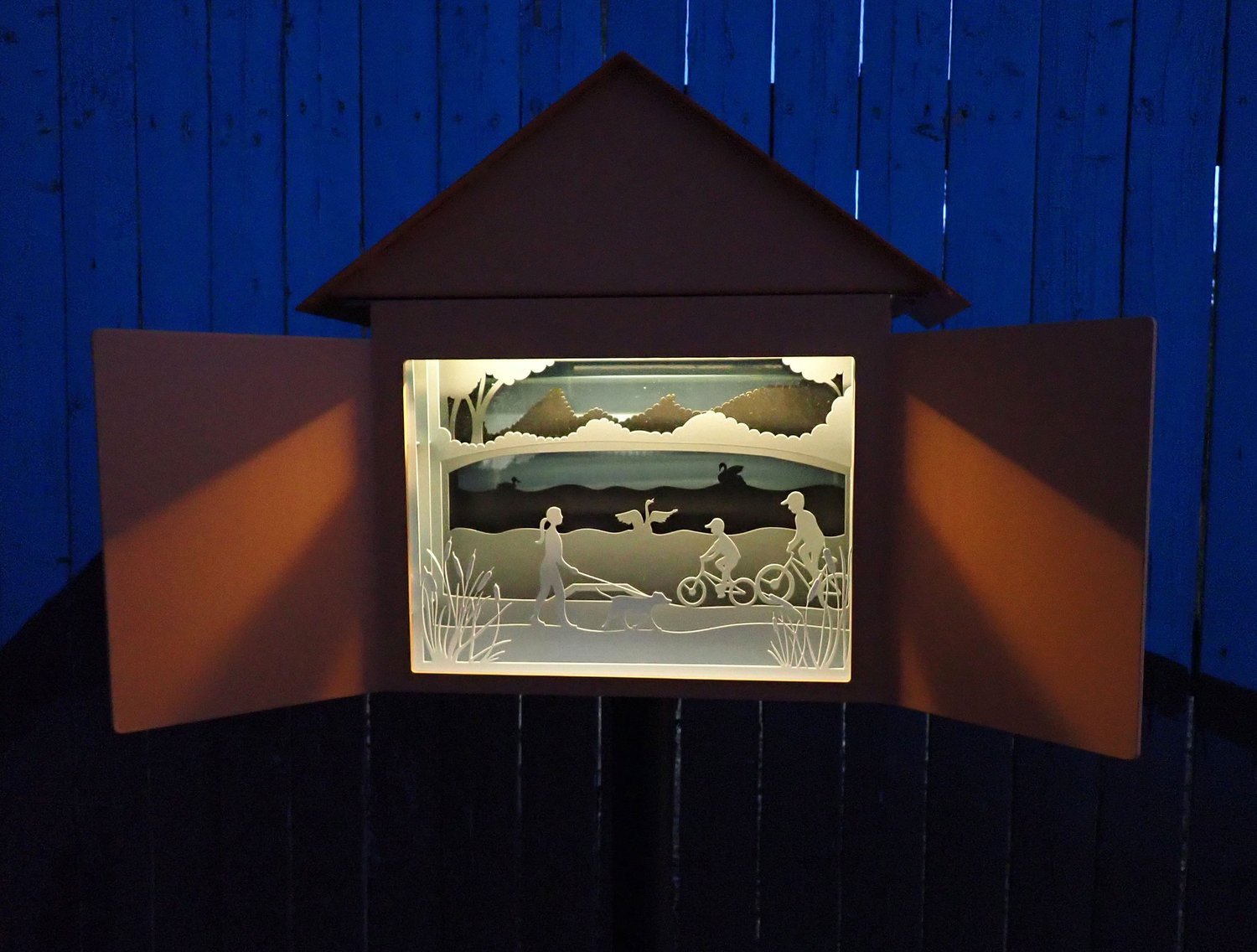
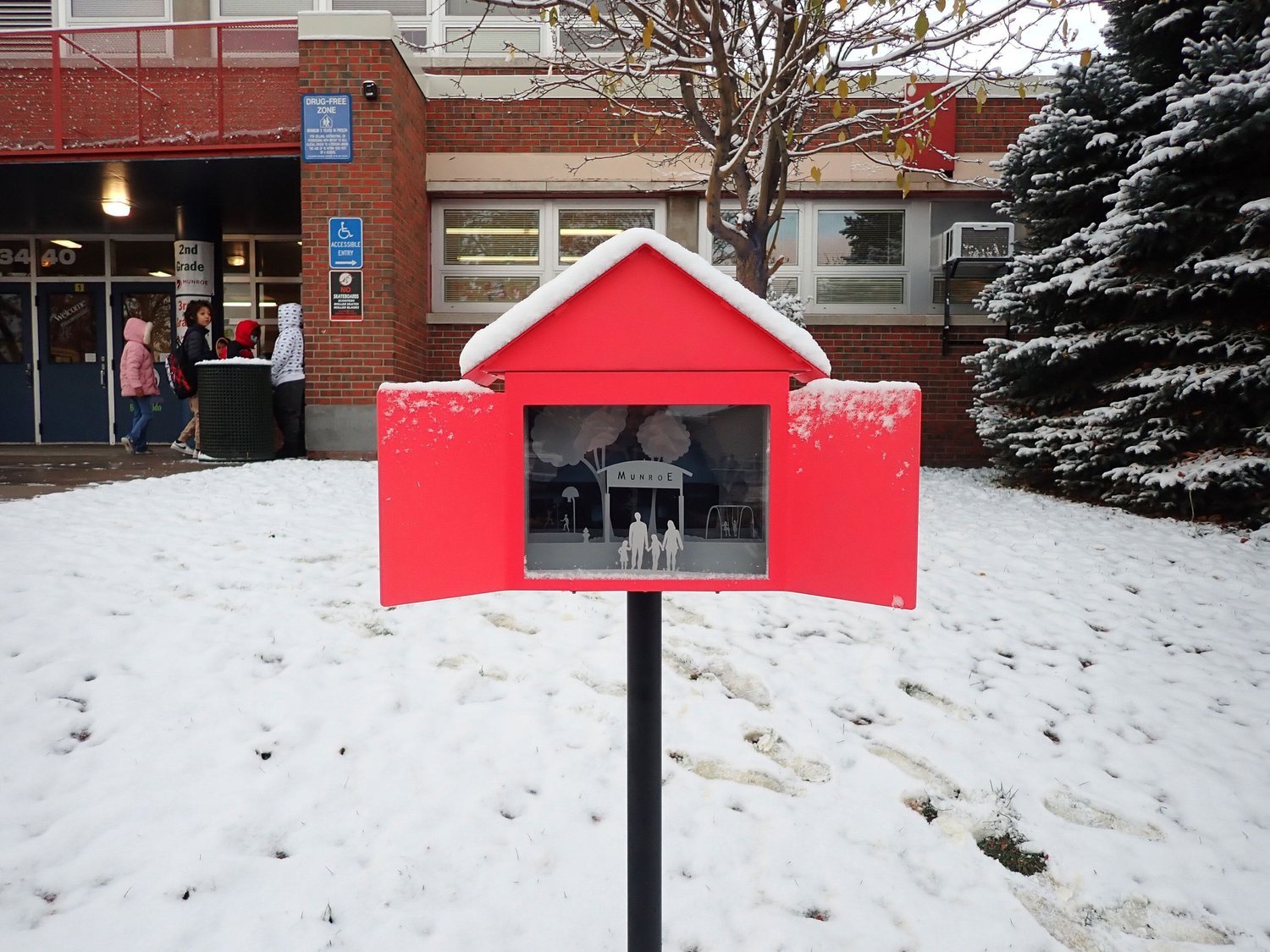
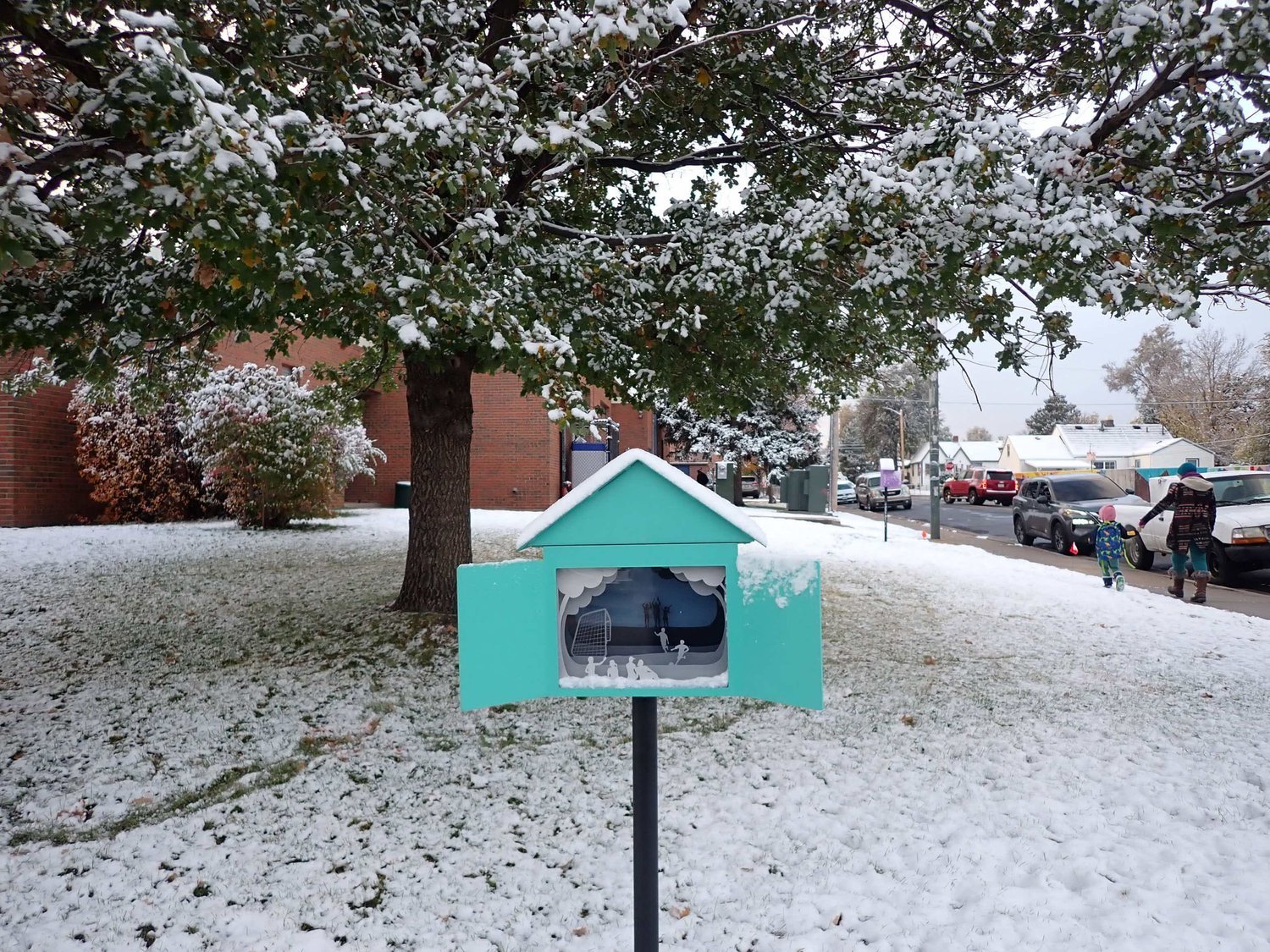
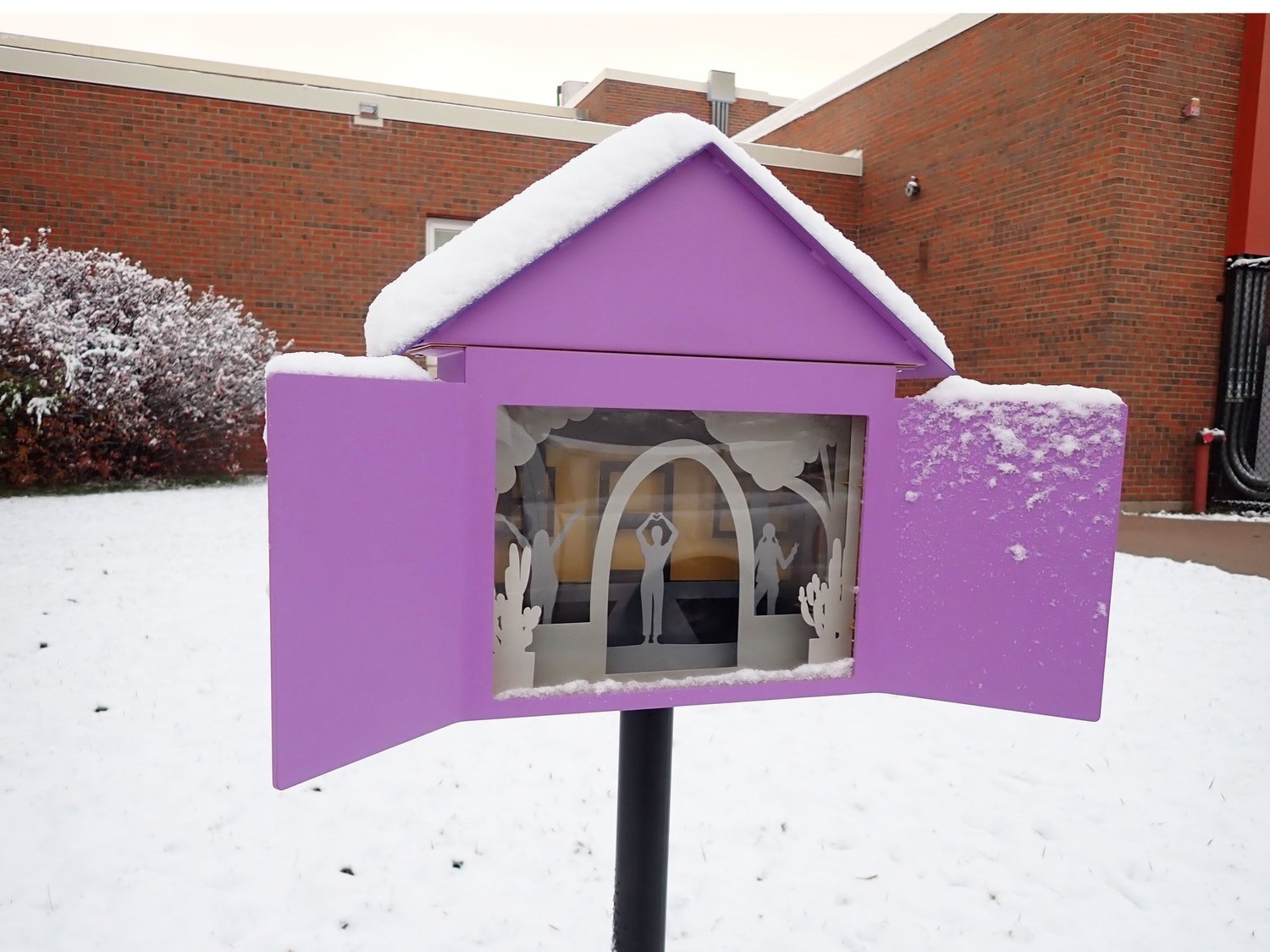
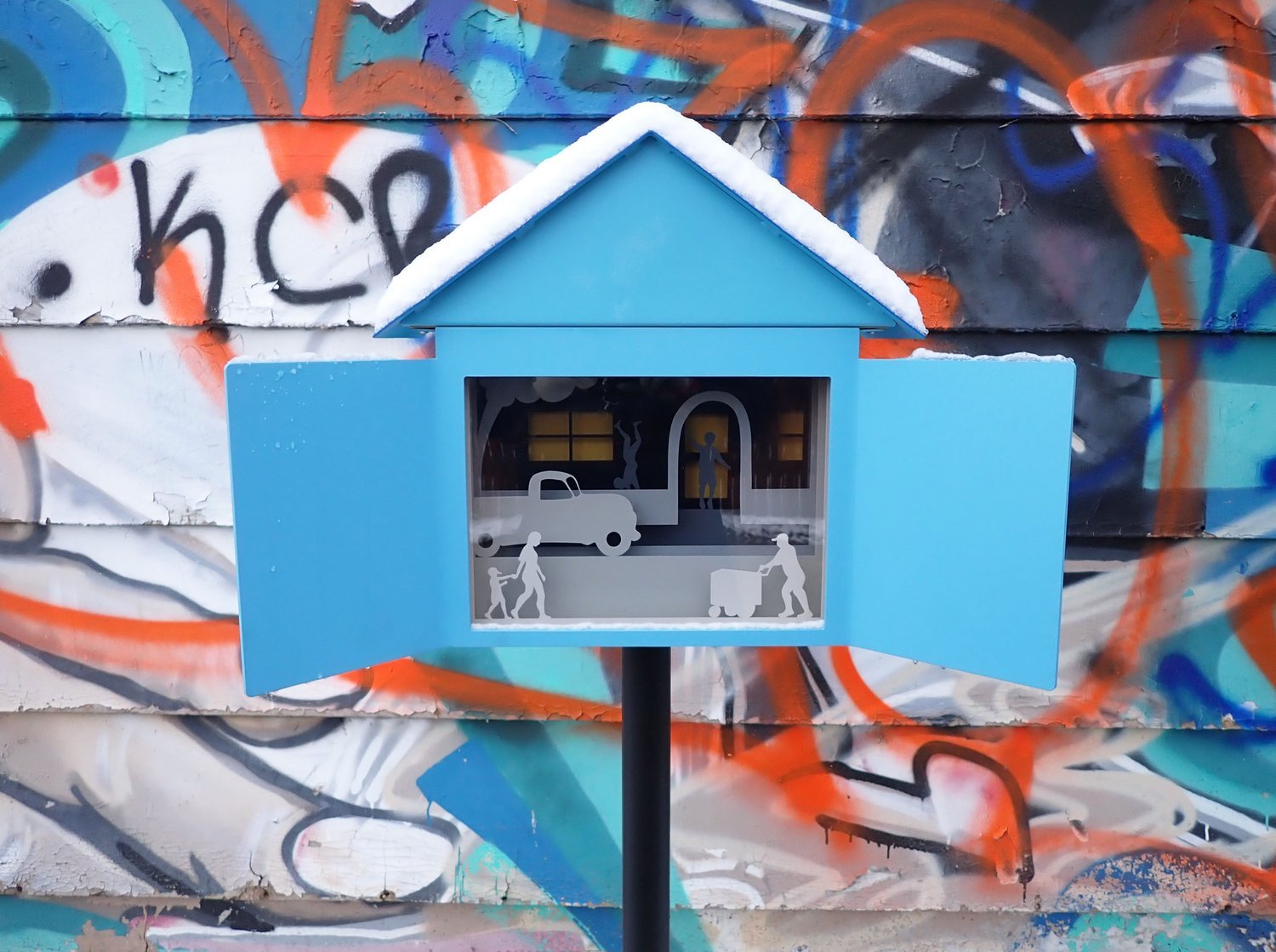
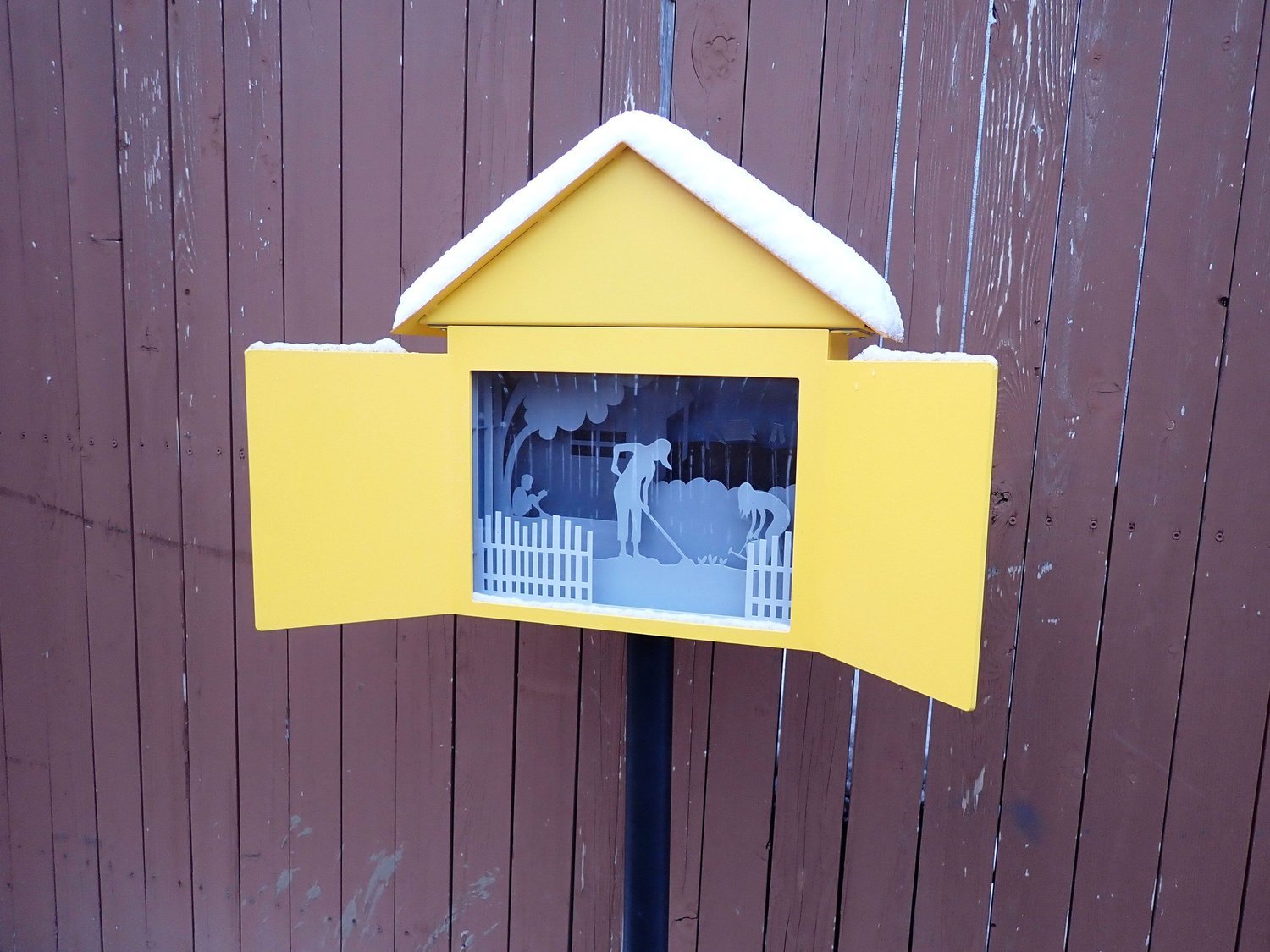
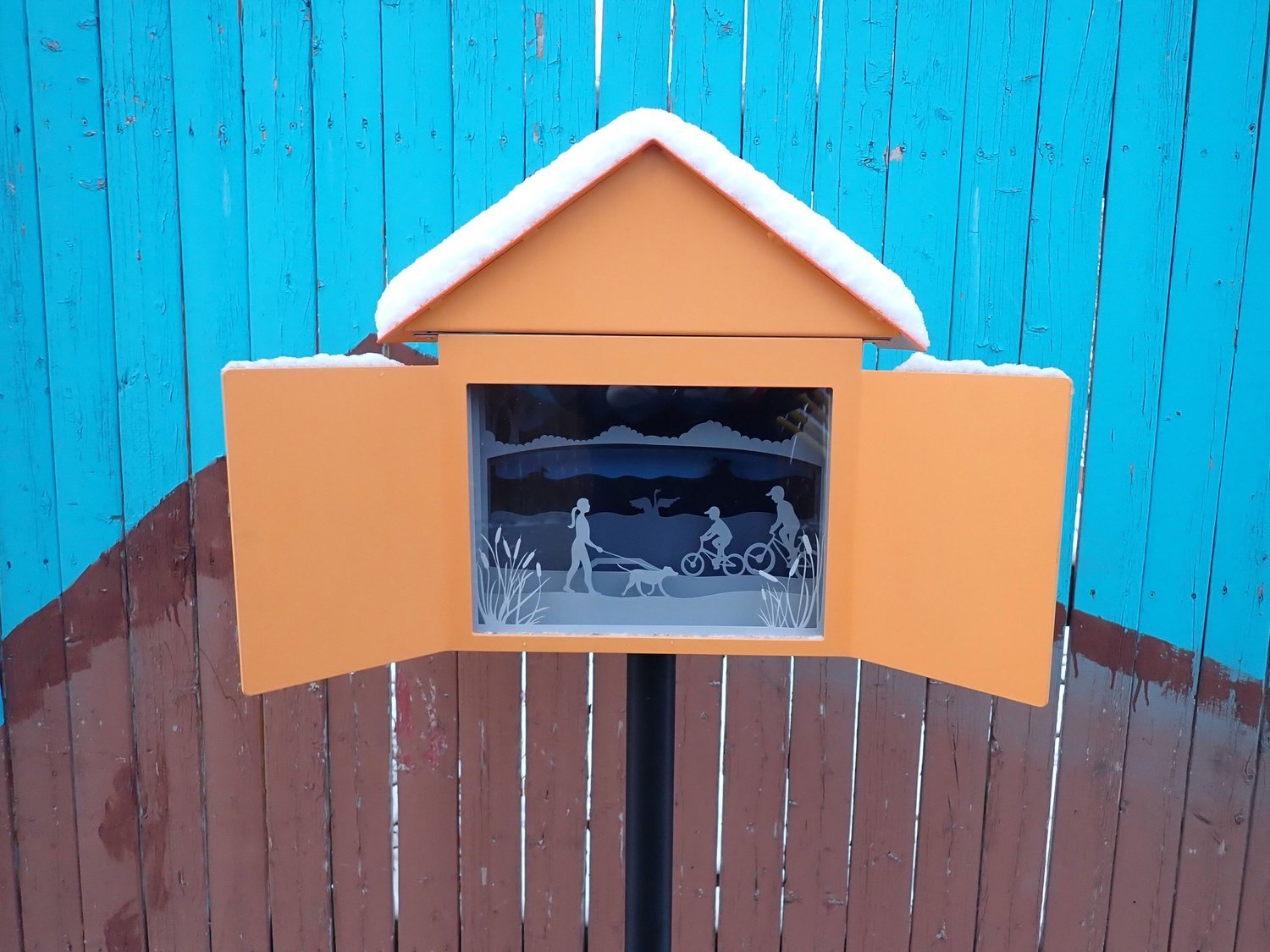
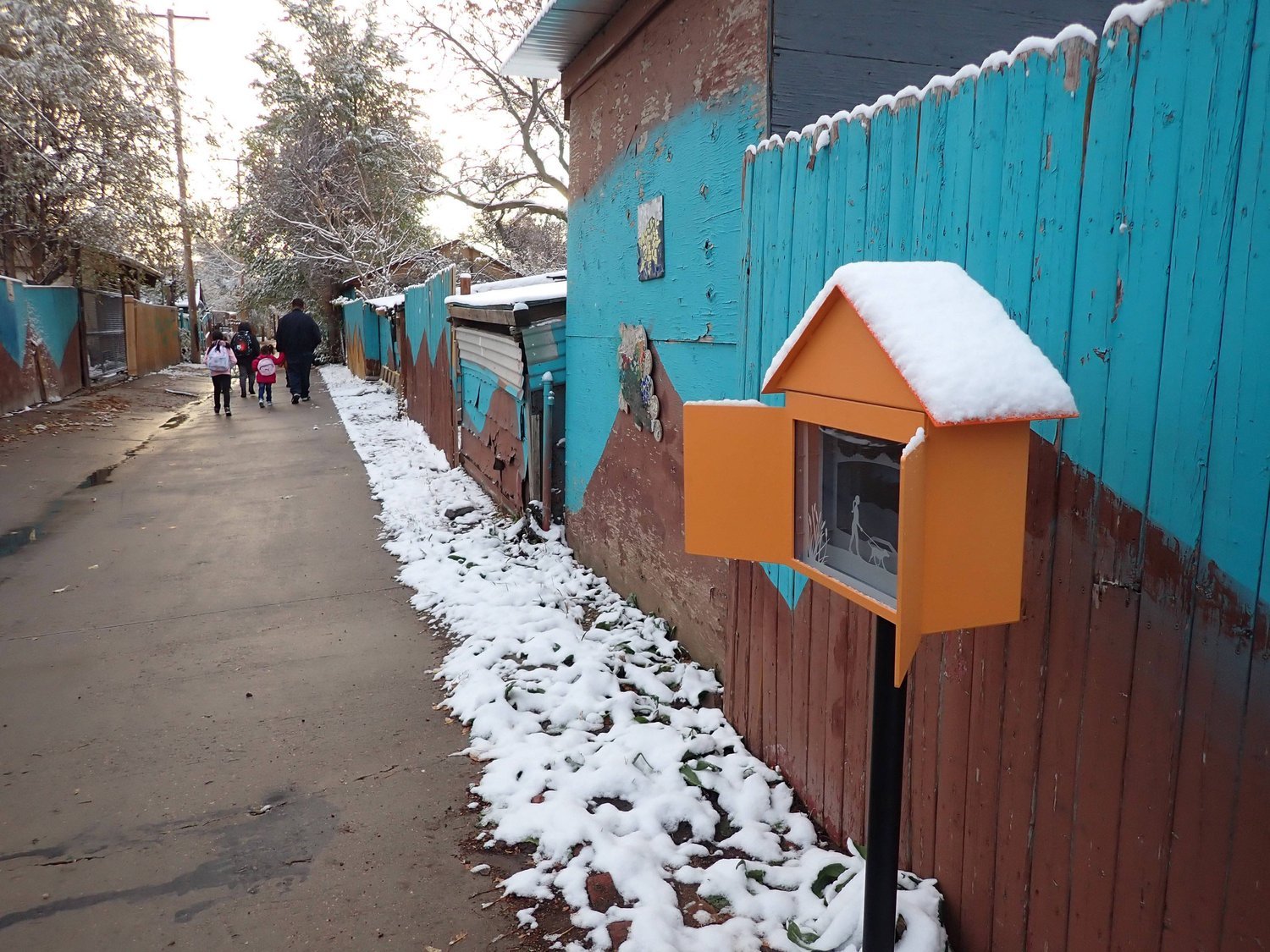
Working on this project helped me to realize how much I enjoy working with communities in the creation of public artwork. I also navigated the complexities of installing on residents’ private property along the alleyway and was fortunate to connect with community members who embraced the project and allowed access to their property. Installing along a more secluded area like an alleyway also came with its own challenges and lessons from a maintenance perspective. Artwork installed in public spaces is not immune to vandalism and I’ve dealt with this along the way and have learned so much from this experience.
Since the installation of this project, I’ve responded to numerous RFQs with a newly completed project in my portfolio. With this new project in my portfolio, I have been selected as a semi-finalist for two public art projects which I am currently developing proposals for. All of this is to say that there are many paths to take in the public art world and sometimes you have to forge your own. As an emerging artist don’t feel limited to the opportunities presented in RFQs, try exploring different routes that afford you the opportunity to add to your experience working with communities and creating artwork for public spaces.
Working in the field of public art as a Project Coordinator at Public Art Services over the past five years has also taught me so much. I’ve learned that public art really is a numbers game. The more opportunities that you apply for, the greater the chance you’ll be selected. A different selection committee is assembled for every opportunity which gives you an even greater chance of finding your audience as you apply to more opportunities. And as you continue to apply to more opportunities it becomes a less daunting task. You can streamline the process of writing a letter of interest or responding to questions by saving previous responses and editing them to speak to the unique nature of each RFQ without having to start with a blank page each time. Documentation is key, having strong images of your artwork is essential. Much of the time this is the selection panel’s first and sometimes only impression of your work. If you have not yet completed an exterior installation, photograph your studio work in an outdoor environment to give the selection panel an idea of how your artwork will lend itself to an exterior site.
I hope my experience helps to shed a little light on the public art world and inspires you to apply to your first RFQ (or your 100th). If you have any questions after reading this feel free to reach out via email to becky@publicartservices.com.
You can learn more about Becky and her art practice by visiting beckywareingsteele.com or following her on Instagram at @beckywareingsteele

